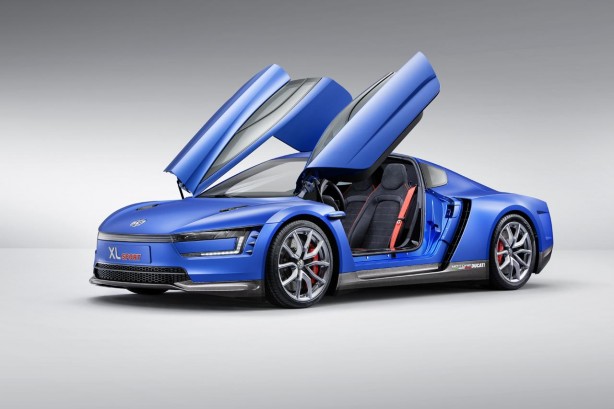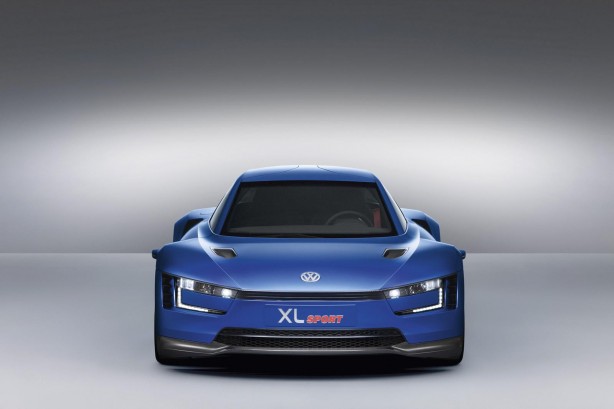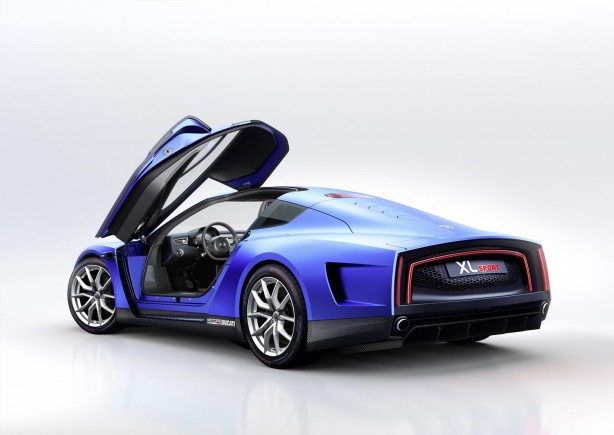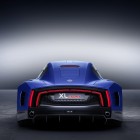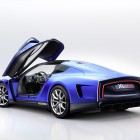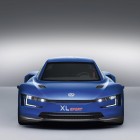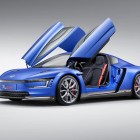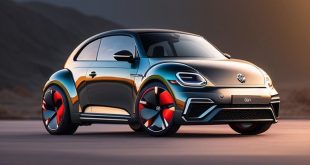Volkswagen has unveiled the XL Sport concept at the 2014 Paris Motor Show. It’s a further development of the company’s lightweight XL1 and is propelled by the world’s most powerful two-cylinder engine made by Ducati, which is also owned by Volkswagen.
Sourced from a Ducati 1199 Superleggera, the 1199cc V2 engine generates 147kW (200PS) and will send the 890kg XL Sport from 0-100km in 5.7 seconds before hitting a top speed of 270km/h. according to Volkswagen, this makes it the fastest 200PS car in the world as no other sports car has ever reached a 270km/h top speed with 200PS.
This is partly thanks to the car’s slippery drag coefficient of 0.258 and the vehicle’s frontal area of 0.44m2. Other aerodynamic features of the car include special air curtains that direct air in the frontal area into specific channels, wheel arch ventilation, an optimised underbody, lift-reducing air ducts in the bonnet, an extendible rear spoiler (powered by the same unit as in the Lamborghini Aventador) and adaptive waste heat vents incorporated in the rear hatch.
The V2 engine can rev up to 11,000rpm and is married to a seven-speed dual-clutch transmission. It rolls on 18-inch forged magnesium-alloy wheels wrapped in 205/40 R18 front and 265/35 R18 rear high-performance tyres, while stopping power comes courtesy of ceramic brakes.
Despite sharing ground with the X1 in terms of its underlying design, the XL Sport has a look of its own. The reason for this is that whereas the XL1 was designed for uncompromising fuel efficiency, the design brief of the XL Sport took this a step further with the inclusion of uncompromising driving dynamics. The special requirements regarding the downforce values of a 270 km/h car and the parameters of the drive technology led to the XL Sport being longer and wider than the XL1. Dimensions in detail: The XL Sport showcased in Paris is 4,291 mm long (XL1: 3,888 mm), 1,847 mm wide (XL1: 1,664 mm), 1,152 mm high (XL1: 1,153 mm). The wheelbase has also been increased to 2,424 mm (XL1: 2,224 mm).
The interior of the XL Sport is based on the interior of the XL1, but has been modified and individualised with a number of special details conforming with the complete realignment of the vehicle’s dynamic. For example, the XL Sport boasts a characteristic digital instrument cluster specially designed for motor sports, with an individual lap time and oil pressure display. A flat carbon part that extends the top of the instrument cluster covering to completely eliminate reflections. The XL Sport’s steering wheel has decorative red stitching and has been equipped with aluminium shift paddles to facilitate ultra quick gear shifts. There are further classy details to add a sporty touch, with anodised aluminium accents around the air vents, the climate control fascia and the DSG shift gate. Picking up the theme of the contrasting red stitching in the steering wheel, the seat belts are also red. No changes have been made to the perfect ergonomics enjoyed by the driver and passenger.
 ForceGT.com Car News, Car Reviews, Video Reviews, Tuning and much more.
ForceGT.com Car News, Car Reviews, Video Reviews, Tuning and much more. 